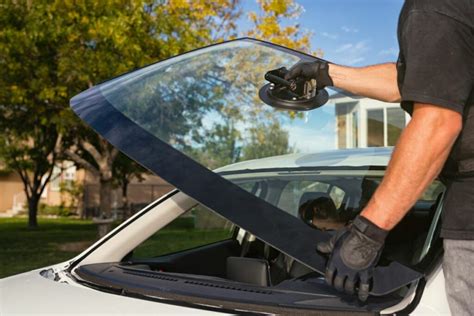Don't Ruin Your Repair! Windshield Tape Timing: A Comprehensive Guide
Replacing a windshield is a significant repair, and while the glass itself is crucial, the process relies heavily on the proper application of urethane adhesive and, importantly, the timing involved in its curing process. Getting the timing wrong can lead to a compromised repair, potentially resulting in leaks, rattles, or even a complete windshield failure down the road. This guide will delve into the critical role of windshield tape timing in ensuring a successful and lasting repair.
What is Windshield Urethane and Why is Timing Crucial?
Automotive glass installation relies on a specialized polyurethane urethane adhesive. This adhesive isn't like typical glue; it's a complex material that cures (hardens) through a chemical reaction, going from a liquid to a solid state over a specific timeframe. This curing process is highly sensitive to temperature and humidity. Improper timing, rushing the process, or failing to allow sufficient curing time can significantly weaken the bond between the glass and the vehicle's frame, leading to disastrous consequences.
How Long Does Windshield Urethane Take to Cure?
There isn't a single definitive answer to this question. The curing time depends on several factors:
- Type of Urethane: Different urethane formulations have different cure times. Some are designed for faster curing, while others require a longer period.
- Temperature: Colder temperatures slow down the curing process, while warmer temperatures accelerate it.
- Humidity: High humidity can also interfere with the curing process.
- Manufacturer's Instructions: Always consult the specific manufacturer's instructions for the urethane used in the repair. This is paramount.
Generally, you should expect a minimum cure time of several hours, but a full, complete cure can take 24 hours or more. Driving immediately after a windshield replacement is a significant risk.
What Happens if I Drive Too Soon?
Driving before the urethane is fully cured can have several negative consequences:
- Windshield Separation: The most serious consequence. The pressure from driving can cause the windshield to separate from the frame, creating a significant safety hazard and possibly requiring a complete redo.
- Leaks: Incomplete curing can leave gaps in the adhesive seal, leading to water leaks into the vehicle's interior.
- Rattles and Noises: A poorly cured bond can result in vibrations and rattles emanating from the windshield area.
How Long Should I Wait Before Driving After a Windshield Replacement?
The best practice is to follow the specific instructions provided by the installer or the urethane manufacturer. Most installers recommend waiting at least a few hours, but a full 24 hours is generally advisable before driving. In cold weather or high humidity, even longer waiting periods might be necessary.
What if the Weather is Bad? Should I postpone the replacement?
Extreme weather conditions can impact the curing process. Very cold temperatures or heavy rain can significantly extend curing times or compromise the adhesive bond. It's best to schedule windshield replacement during moderate weather for optimal results. Consult the installer for guidance on appropriate weather conditions for the replacement.
Can I Speed Up the Curing Process?
While some techniques claim to speed up the curing process (like using heat lamps), these are generally not recommended unless explicitly advised by the urethane manufacturer. Improper application of heat can damage the urethane or the windshield itself. Always prioritize the manufacturer's instructions.
What are the Signs of Improper Curing?
Signs of improper curing might not be immediately apparent. However, be vigilant for:
- Leaks: Water entering the vehicle's interior around the windshield.
- Rattles or Noises: Vibrations or sounds emanating from the windshield area.
- Loose Windshield: The windshield feeling loose or unstable.
- Visible Gaps: Noticeable gaps between the windshield and the frame.
If you notice any of these signs, contact your installer immediately.
Conclusion:
Windshield tape timing (or rather, the urethane curing time) is not something to be taken lightly. A rushed repair can lead to costly and dangerous consequences. Always prioritize safety and follow the manufacturer's instructions and your installer's recommendations for optimal results. Patience is key to a successful and long-lasting windshield repair. Remember, a well-installed windshield contributes significantly to your vehicle's structural integrity and safety.

